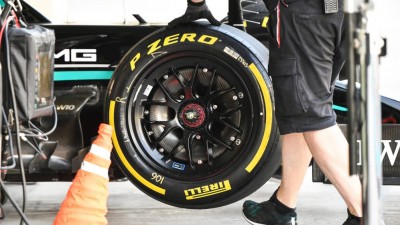
London, Formula 1 will not only have new cars in 2022 season but also new tyres as its official supplier Pirelli implementing larger, 18-inch rubber for the new season.
Pirelli, who on Friday celebrated their 150th anniversary, said the teams will still have a limited number of tyres for each Grand Prix and therefore can't choose compound tyres for the weekend.
In 2019, teams were able to choose how many of each compound their drivers would receive over a weekend. For example, Max Verstappen and Lewis Hamilton both took one set of hard compounds, four mediums and eight softs apiece for the 2019 German Grand Prix, while Sebastian Vettel had one set of hard compund tyres, three mediums and nine softs, said a report in the f1.com website.
According to the report, when the global pandemic hit in 2020, teams agreed that Pirelli would set the allocations for each race, meaning every driver had the same number of each compound.
On Friday, the tyre suppliers' Head of F1 and Car Racing, Mario Isola, explained that the reason the rule has remained is that the teams have wanton that.
"We had to find this solution [of fixed tyre allocation] for the pandemic – to [have] a quicker reaction – but then the teams came back to us saying ‘actually this system is quite good, we want to keep it for the future," he was quoted as saying by the website.
"It was not our decision at the end to continue with this fixed allocation; the teams told us if they have a fixed allocation and it is the same for everybody –- so there is no advantage for one or the other -– they can start planning on this fixed allocation.
"Instead of spending time and the resources and people to think about one set more of the mediums or one set less of the soft, they have that allocation, they have to work around this, and so in 2020 they said: 'We want to continue for 2021'," he said.
Isola concluded that Pirelli will therefore continue deciding the allocation for teams in 2022 – with 18-inch tyres in play this season – but there is scope to change the rule next season.
"In 2021, with a new product for 2022, nobody was confident for deciding the compounds breakdown, and so they wanted to continue. I don't know if in 2023 they want to change but, for the moment, this is the answer," Isola said.


.jpeg)

